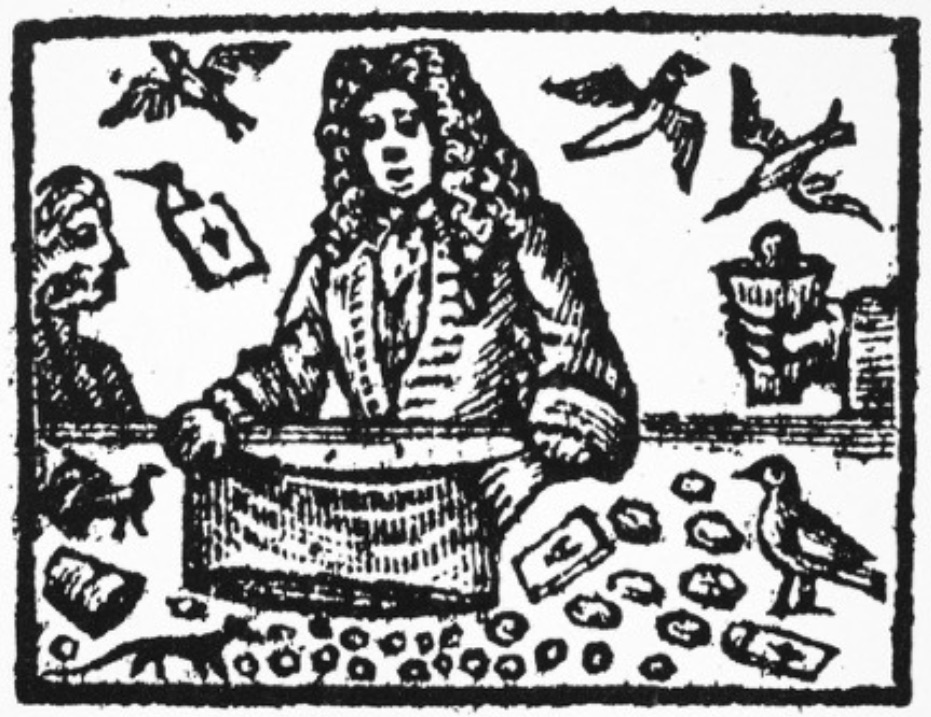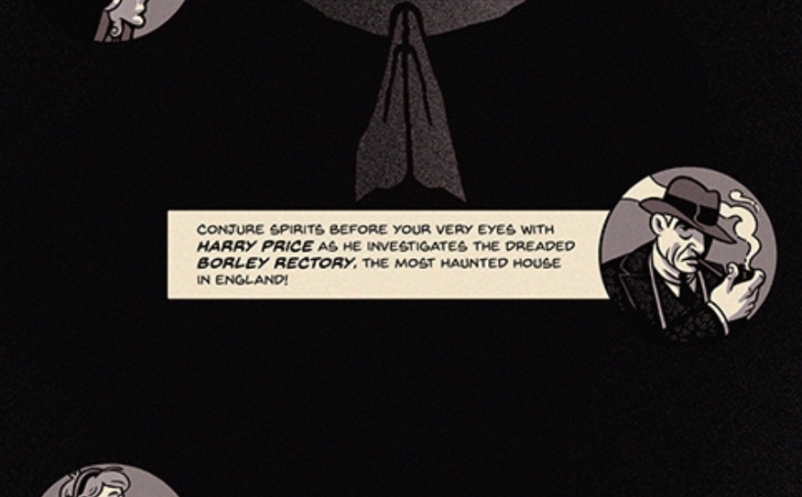- A Note from Our President
- The Stand-Up Lecture
- Agenda, May 2023
- Martin Hansson & Leif Olberius
- Happy Hour at Café De Buurvrouw
- Looking for Erdnase
- Golden Cat 10th Anniversary
- Isaac Fawkes was known as the Sleight of Hand Man
- Spun into Gold (Book Tip)
- Symbolism is a wonderful, magical and mystical thing
Isaac Fawkes, The Sleight of Hand Man, was a popular showman in the early 1700s. He was often satirized for practicing what was considered a low-brow art. Painter and critic William Hogarth frequently mocked his show and scorned local audiences’ taste for a stage “debauch’d by fooleries.” Fawkes, undeterred, publicly trumpeted his financial success, bragging about putting “seven hundred Pounds into the Bank,” a convincing argument for artistic merit. He rose to fame in the 1720s and become a popular cultural figure, the name ‘Fawkes’ becoming synonymous with the skillful conjuror, and depictions of him appear in engravings by William Hogarth. Fawkes was not the first fair conjurer and neither was he particularly innovative in his routines (though he did make copious use of the recently invented Egg Bag). One of Fawkes’ advertisements described his routine in some detail: He takes an empty bag, lays it on the Table and turns it several times inside out, then commands 100 Eggs out of it and several showers of real Gold and silver, then the Bag beginning to swell  several sorts of wild fowl run out of it upon the Table. He throws up a Pack of Cards, and causes them to be living birds flying about the room. He causes living Beasts, Birds, and other Creatures to appear upon the Table. He blows the spots of the Cards off and on and changes them to any pictures Despite his contemporary fame, his first name was forgotten until the record of his burial was rediscovered by Houdini in the records of St. Martin-in-the-Fields church in Trafalgar Square, London in 1904. Fawkes is frequently associated with the annual Bartholomew and Southwark Fairs in London, where his booth was a great attraction. His act consisted of conjuring, contortionism, and the exhibition of mechanical devices made by the famous clockmaker Christopher Pinchbeck, with whom he had a longstanding collaboration. His success had, in part, to do with the recently created Egg Bag, which he used extravagantly. He was also popular for throwing a pack of cards into the air where they were transformed into birds. In Round About Our Coal Fire, Fawkes is described as one of the “Old heroes in Magick”. While Fawkes was performing at one of the fairs early in 1732 a fire broke out in a neighboring booth and frightened his wife, Alice, so severely that she had to go into an “early confinement”. Whether this fire was connected to Fawkes’ death later that year is not known. Fawkes died on 25 May 1732 and was buried at St Martin-in-the-Fields, Westminster three days later. He had amassed a considerable fortune to leave to Alice; reports at the time suggested he “had honestly acquired a fortune of above ten thousand pounds, being no more than he really deserved for his great ingenuity, by which he surpassed all that ever pretended to be art.” He was succeeded by his son, who continued the collaboration with the Pinchbeck family, though did not enjoy the popular success of his father.
several sorts of wild fowl run out of it upon the Table. He throws up a Pack of Cards, and causes them to be living birds flying about the room. He causes living Beasts, Birds, and other Creatures to appear upon the Table. He blows the spots of the Cards off and on and changes them to any pictures Despite his contemporary fame, his first name was forgotten until the record of his burial was rediscovered by Houdini in the records of St. Martin-in-the-Fields church in Trafalgar Square, London in 1904. Fawkes is frequently associated with the annual Bartholomew and Southwark Fairs in London, where his booth was a great attraction. His act consisted of conjuring, contortionism, and the exhibition of mechanical devices made by the famous clockmaker Christopher Pinchbeck, with whom he had a longstanding collaboration. His success had, in part, to do with the recently created Egg Bag, which he used extravagantly. He was also popular for throwing a pack of cards into the air where they were transformed into birds. In Round About Our Coal Fire, Fawkes is described as one of the “Old heroes in Magick”. While Fawkes was performing at one of the fairs early in 1732 a fire broke out in a neighboring booth and frightened his wife, Alice, so severely that she had to go into an “early confinement”. Whether this fire was connected to Fawkes’ death later that year is not known. Fawkes died on 25 May 1732 and was buried at St Martin-in-the-Fields, Westminster three days later. He had amassed a considerable fortune to leave to Alice; reports at the time suggested he “had honestly acquired a fortune of above ten thousand pounds, being no more than he really deserved for his great ingenuity, by which he surpassed all that ever pretended to be art.” He was succeeded by his son, who continued the collaboration with the Pinchbeck family, though did not enjoy the popular success of his father.
Mergan



